
Dank pfiffiger Lichtinszenierung und gestalterischen Gesamtkonzepts rückt diese Eckdusche als wahrer Blickfang ins Zentrum der Betrachtung. Und auch baulich gab es bei dieser Badrenovierung einige Besonderheiten, speziell beim Ausbau der Dusche.
Umgestaltung zum geräumigen Elternbad
Der Wunsch der Bauherren nach einem eigenen, großzügigen Elternbad wurde im Rahmen einer Generalsanierung umgesetzt, indem eine ehemalige Küche und ein Abstellraum zusammengelegt wurden. Die wichtigste Anforderung war eine große, bodengleiche Dusche, die sowohl optisch ansprechend als auch altersgerecht ist. Für eine optimale Planung holte die Familie den Badplaner und den Fliesenleger frühzeitig ins Boot.
Innovative Lösungen für eine bodengleiche Dusche
Eine besondere Herausforderung war die technische Umsetzung der bodengleichen Dusche in einem Altbau von 1966. Glücklicherweise ermöglichte eine Kernbohrung in den darunter liegenden Technikraum einen senkrechten Ablauf, was die Planung erheblich vereinfachte. Mithilfe von speziellen Bauplatten und Formteilen aus Hartschaum wurde die Duschanlage nicht nur perfekt in die Ecke des Raumes integriert, sondern auch die Wärmedämmung optimiert und unebene Wände ausgeglichen.
Design und Funktionalität im Detail
Das Bad besticht durch raffinierte Details: Der Duschablauf ist diskret in der Wand verborgen, während ein Eckelement mit einer LED-Schiene für eine effektvolle Lichtinszenierung sorgt. Eine integrierte Nische bietet praktischen Stauraum. Für die Duschabtrennung wurden feststehende Glaswände und eine halbhohe Mauer zum WC hin gewählt, die für eine moderne und offene Architektur sorgen. Die glamourösen Fliesen in unaufdringlichem Grauton mit metallischen Reflexionen setzen das Bad und die Dusche perfekt in Szene.
Schritt für Schritt Anleitung
Schritt 1 – Mörtel aufkämmen
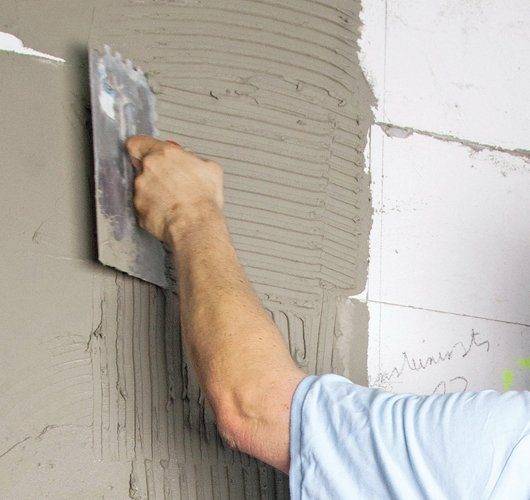
Schritt 2 – Bauplatten mit Mörtel beziehen
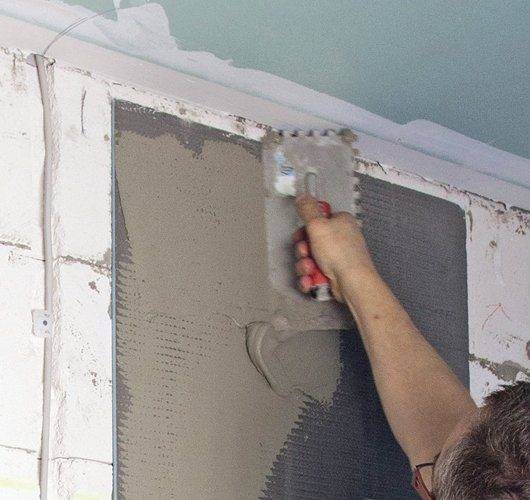
Schritt 3 – Platten ansetzten
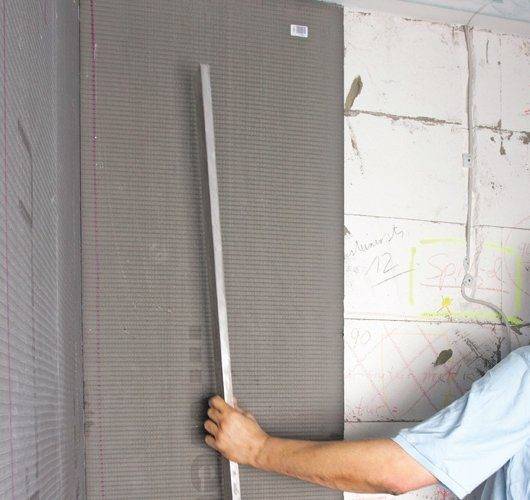
Schritt 4 – Bauplatten verlegen
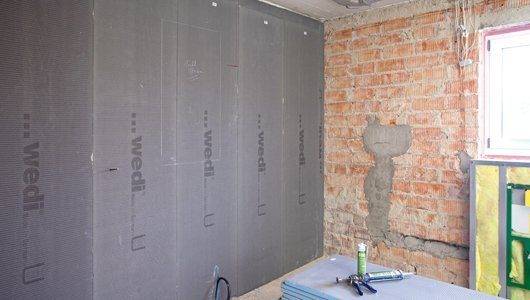
Schritt 5 – Fixierung
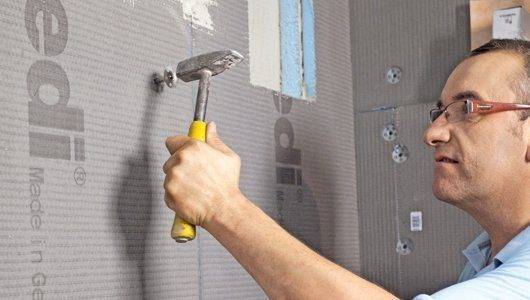
Schritt 6 – Duschelement
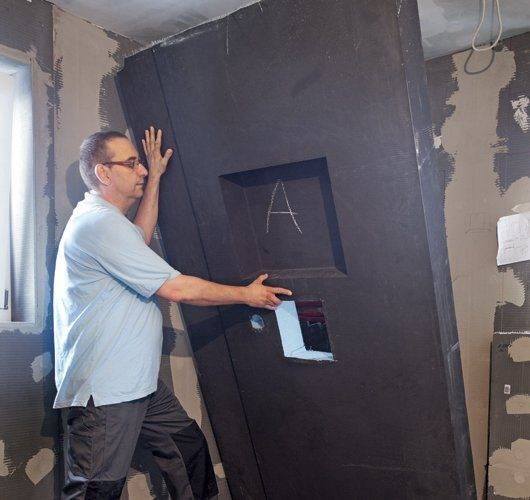
Schritt 7 – Duschelement einsetzten

Schritt 8 – Wasserleitung und Armatur
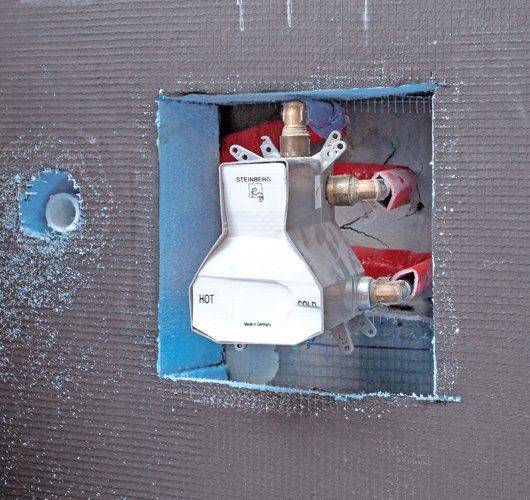
Schritt 9 – Eckelement einfügen
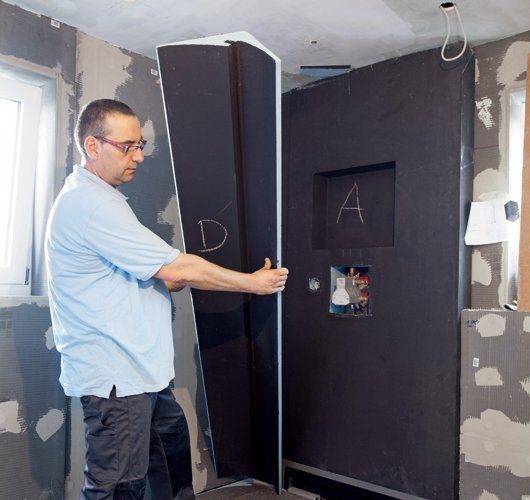
Schritt 10 – Überblick Eckdusche
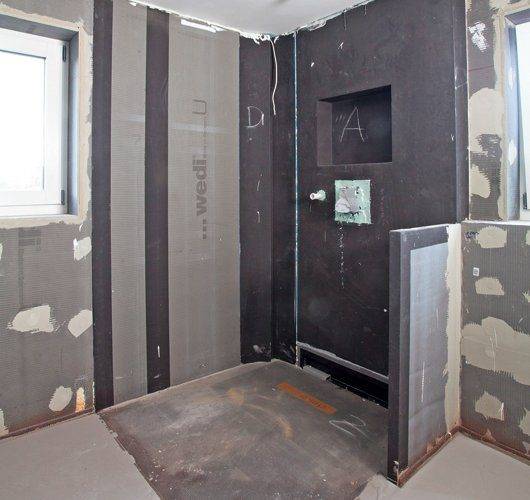
Schritt 11 – Armierungsgewebe anlegen und spachteln
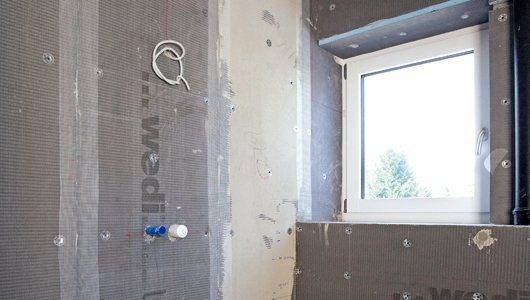
Schritt 12 – Überblick Badezimmer

Schritt 13 – Ablauf
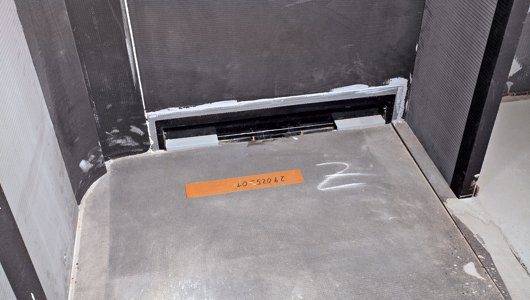
Schritt 14 – LED-Schiene
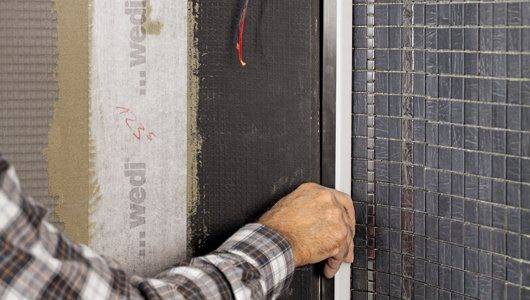
Schritt 15 – Fliesenkleber aufkämmen
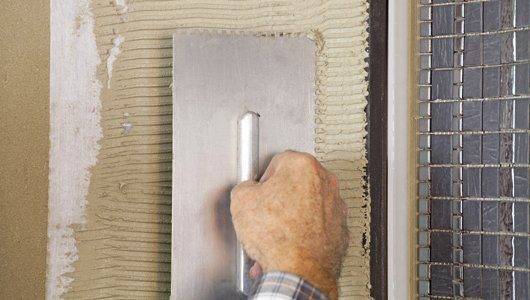
Schritt 16 – Mosaikfliesen verlegen
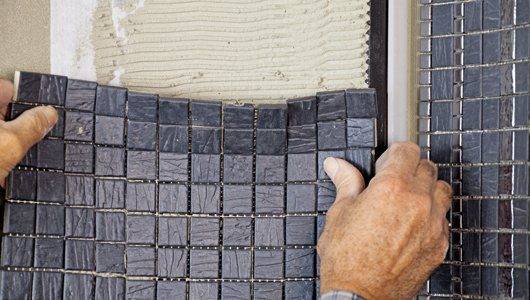
Schritt 17 – Über Eck verlegen
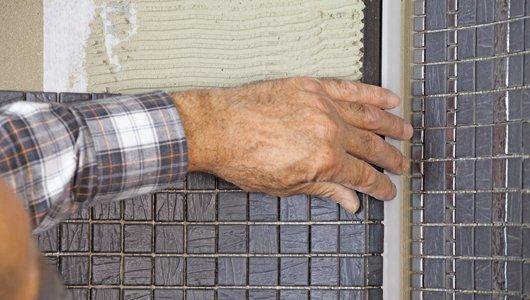
Schritt 18 – Edelstahleckprofile
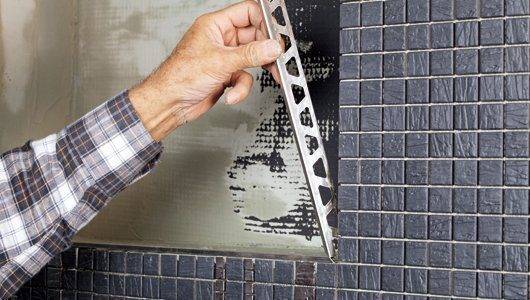
Schritt 19 – Boden auslegen
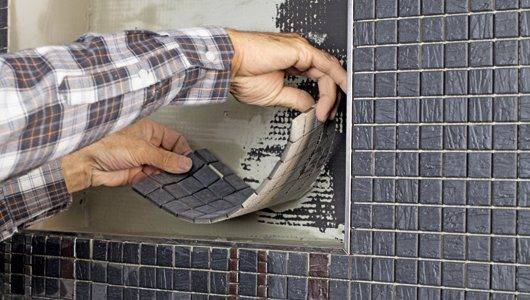
Schritt 20 – Überblick Mosaik
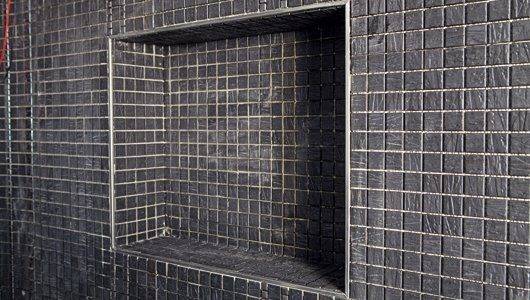
Schritt 21 – Bodenfliesen

Schritt 22 – Fertige Fliesen
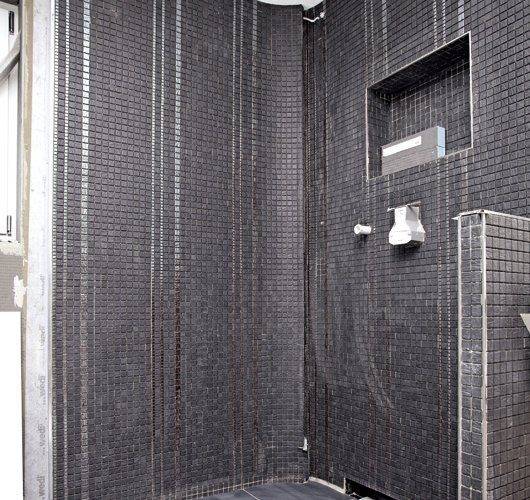
Schritt 23 – Überblick LED-Licht
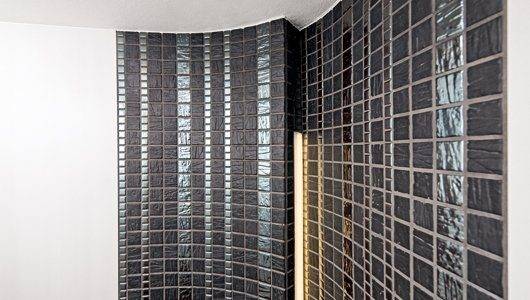
Schritt 24 – Edelstahlabdeckung
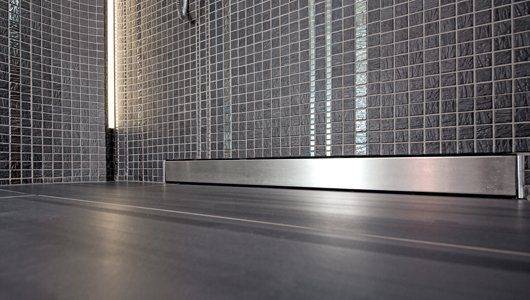
Schritt 25 – Überblick Dusch-Ecklösung
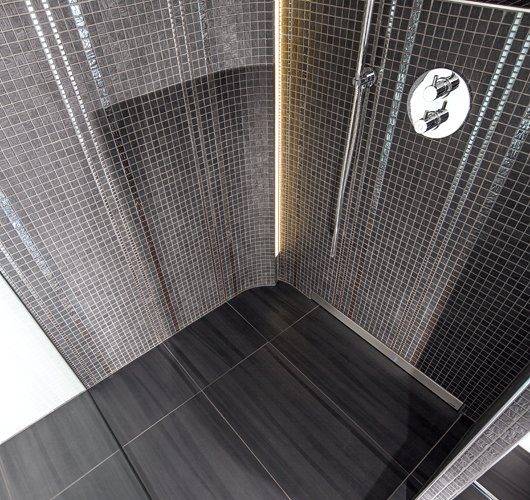
Weitere Informationen
Hartschaum-Bauplatten in unterschiedlichen Dicken,
bodengleiches Duschelement Fundo Riolito,
Sonderanfertigungen,
Dünnbettmörtel wedi 320,
Metalldübel,
Selbstklebe Armiergewebe,
Kleb- und Dichtstoff wedi 610,
www.wedi.de
Mosaikfliesen und großformatige Bodenfliesen aus der Serie Natural Glamour in anthrazit und anthrazit-mix
www.jasba.de
Unterputzarmatur, Hand- und Kopfbrause
www.steinberg-armaturen.de
PDF Download: Eckdusche als Blickfang
